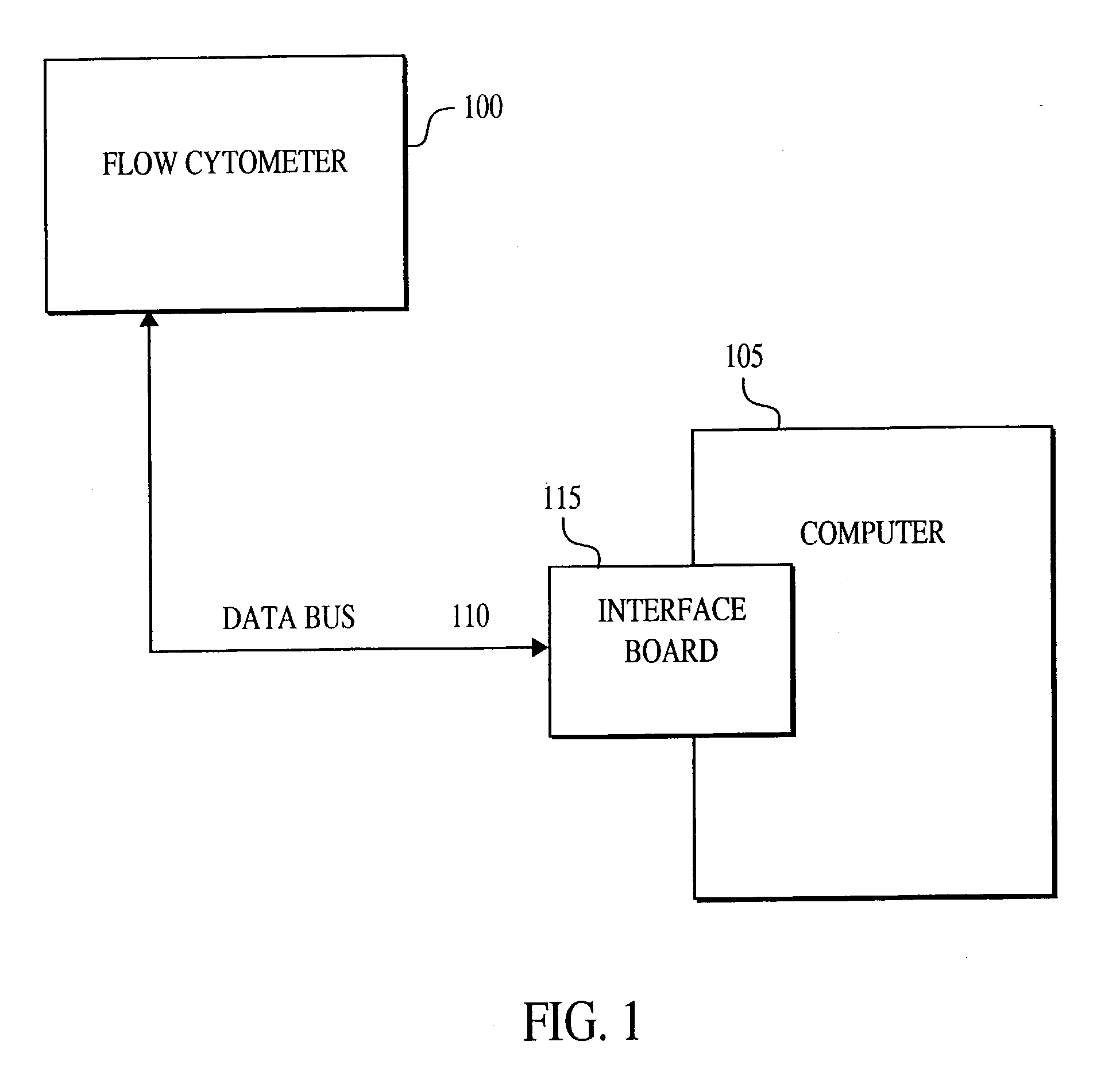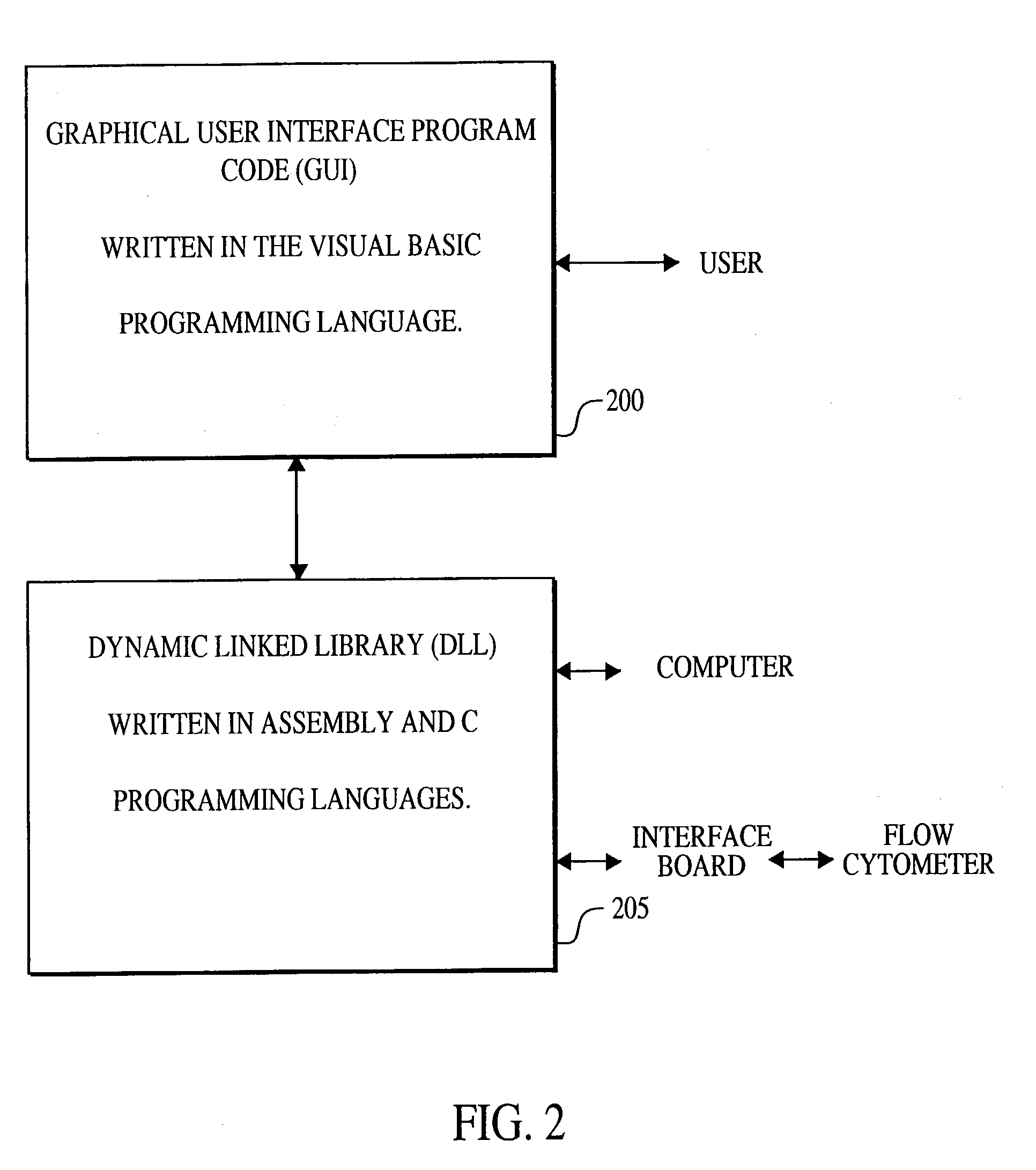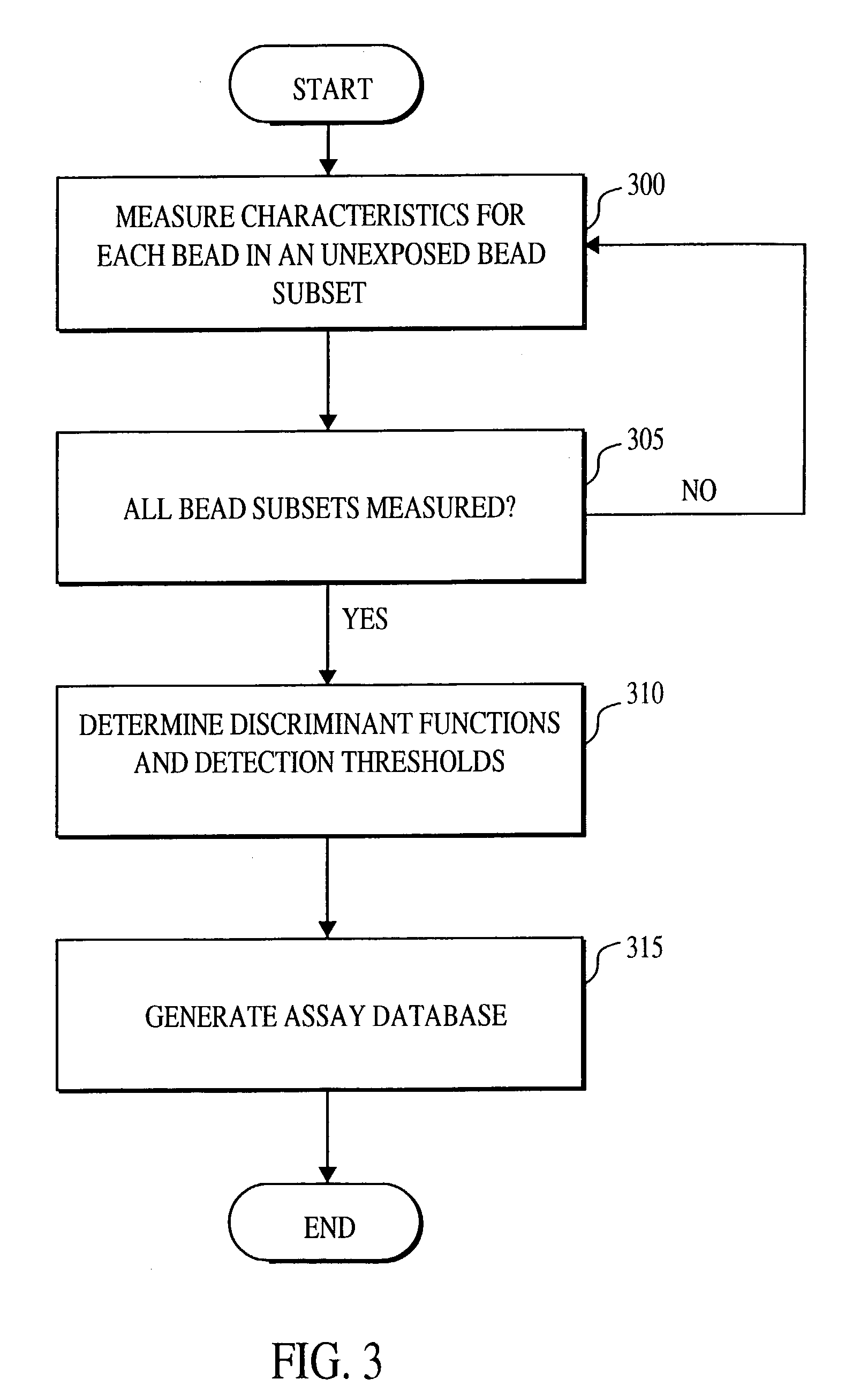Multiplexed analysis of clinical specimens apparatus and method
a clinical specimen and multi-modal technology, applied in the field of laboratory diagnostic and genetic analysis, can solve the problems of significant analytical errors, limited capability, unsatisfactory results, etc., and achieve the effect of expanding the multiplexing power of the system
- Summary
- Abstract
- Description
- Claims
- Application Information
AI Technical Summary
Benefits of technology
Problems solved by technology
Method used
Image
Examples
experimental example
[0119] Three different antigen-antibody pairs were used in a multiplex experiment demonstrating the ability to detect the presence or absence of several antibodies in a single sample. Antigens were coupled to latex microspheres via carbodiimide coupling, and the corresponding antibodies were fluorescently labeled with fluorescein isothiocyanate (green fluorescence—Fm). Each antigen was coupled to a unique microsphere. Baseline data for the fluorescent antibodies and antigen-microsphere complexes used in this experiment are shown in FIG. 13a. Baseline data for the three bead subsets of FIG. 13a are given in FIG. 13b.
[0120] The absence of fluorescence (C2 and C3) immediately discriminates the clear beads (subset 50) from beads in the other two subsets. Subsets 45 and 50 were further discriminated by side light scatter (C1) and red fluorescence (C3). Linear discriminant functions based on these observations and created as described in Section 6.2(c); are shown in FIG. 13c. Accepting o...
PUM
| Property | Measurement | Unit |
|---|---|---|
| wavelengths | aaaaa | aaaaa |
| wavelengths | aaaaa | aaaaa |
| temperature | aaaaa | aaaaa |
Abstract
Description
Claims
Application Information
 Login to View More
Login to View More - R&D
- Intellectual Property
- Life Sciences
- Materials
- Tech Scout
- Unparalleled Data Quality
- Higher Quality Content
- 60% Fewer Hallucinations
Browse by: Latest US Patents, China's latest patents, Technical Efficacy Thesaurus, Application Domain, Technology Topic, Popular Technical Reports.
© 2025 PatSnap. All rights reserved.Legal|Privacy policy|Modern Slavery Act Transparency Statement|Sitemap|About US| Contact US: help@patsnap.com



